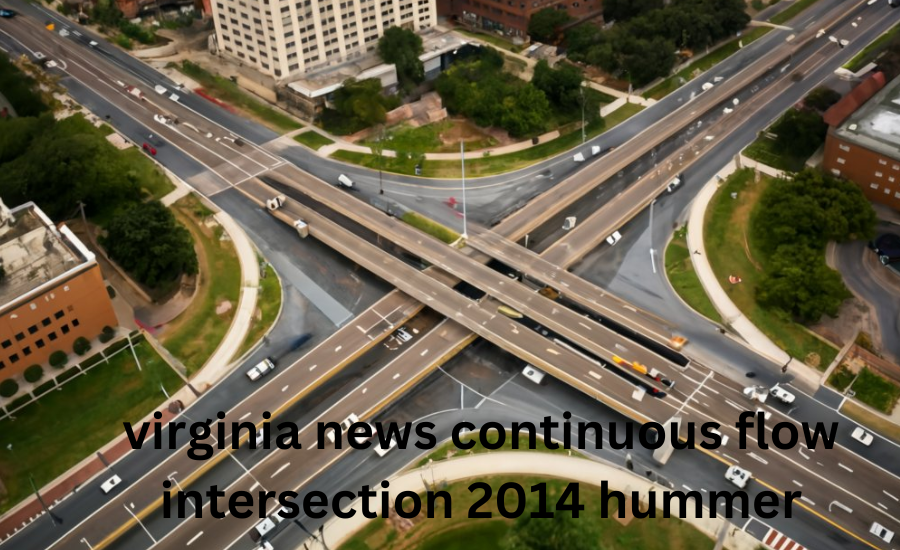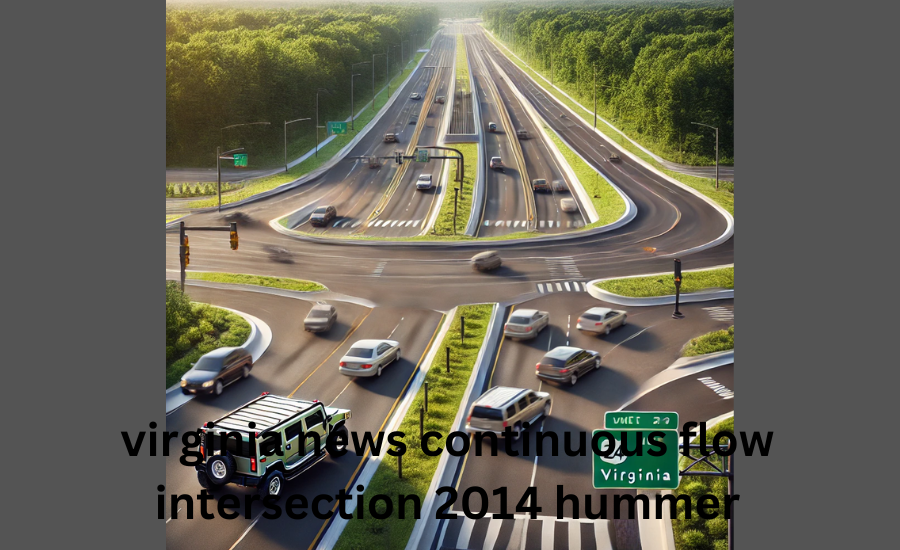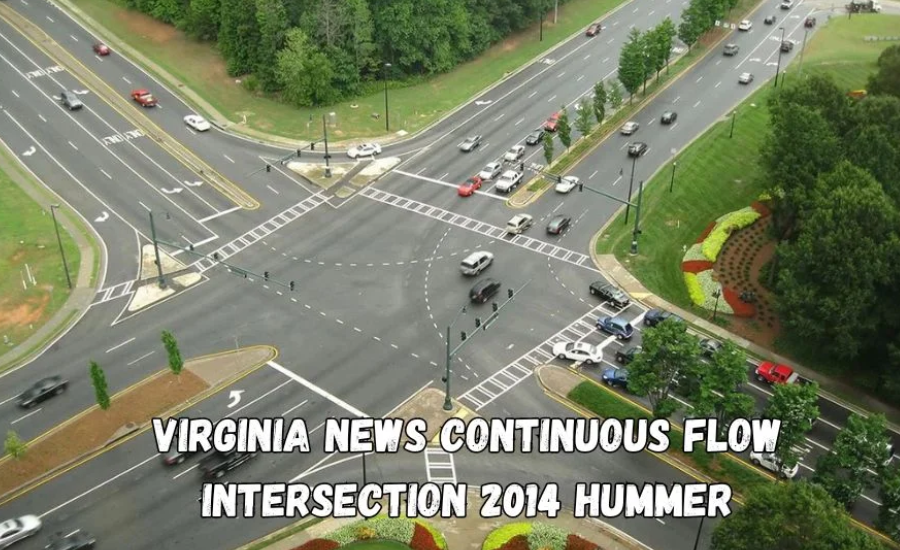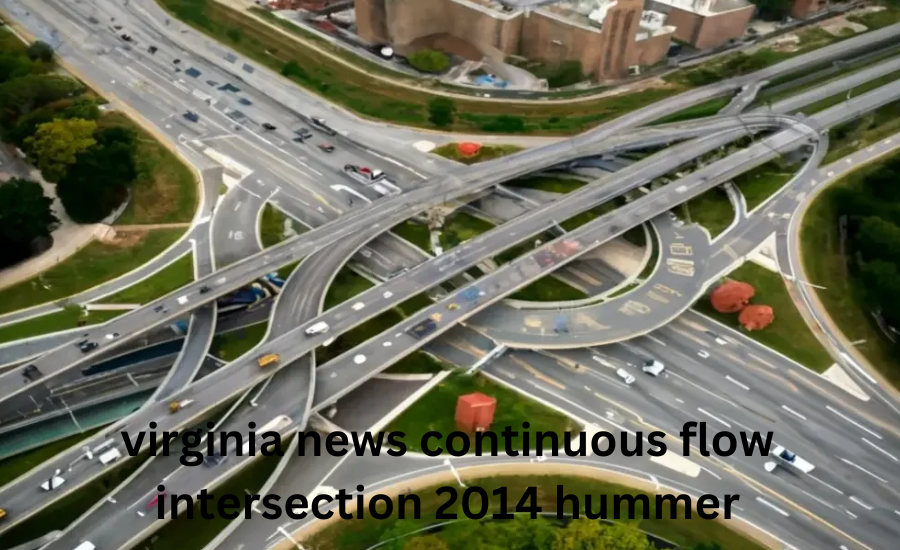As urban areas expand and traffic congestion intensifies, city planners and traffic engineers are constantly exploring new ways to ease the daily challenges faced by commuters. One promising innovation that has attracted significant attention is the Continuous Flow Intersection (CFI), highlighted in discussions about Virginia’s 2014 Hummer and the implementation of this advanced intersection design. CFIs stand out for their capacity to enhance traffic movement, particularly in regions where conventional intersections have struggled to manage the increasing volume of vehicles. The growing popularity of larger vehicles, such as the 2014 Hummer, has also prompted discussions on how these sizable automobiles can efficiently traverse these cutting-edge intersection designs.
In this article, we delve into how Virginia’s adoption of the Continuous Flow Intersection in 2014, alongside the integration of larger vehicles like the Hummer, marks a pivotal advancement in urban traffic management. By examining the technical workings of CFIs, their influence on the surrounding community, and the successful navigation of oversized vehicles within these spaces, this exploration provides a thorough insight into the future of traffic solutions for drivers of all vehicle sizes.
Understanding the Continuous Flow Intersection

A Continuous Flow Intersection (CFI) is an innovative traffic design developed to tackle the persistent issue of traffic delays caused by congestion. Unlike conventional intersections, where vehicles are required to stop at traffic lights and wait their turn, the CFI allows for smoother movement by enabling certain maneuvers—particularly left turns—before entering the main intersection. This approach significantly reduces the time vehicles spend waiting, as left-turning traffic can proceed without depending on green lights, thereby decreasing congestion and improving overall efficiency.
In Virginia, where traffic bottlenecks are a frequent issue during peak hours, the introduction of CFIs has emerged as a powerful solution for managing high volumes of vehicles. The story surrounding the Virginia Continuous Flow Intersection and the 2014 Hummer has drawn attention for highlighting how even large vehicles, which often struggle with tight, congested roads, can navigate through these intersections with ease. This case exemplifies how CFIs can accommodate a wide range of vehicle sizes while optimizing traffic flow in high-demand areas.
Expanding the reach of CFIs could prove to be a transformative step in traffic management, not just for Virginia but for any urban area facing similar challenges. This intersection design is a blueprint for future developments in infrastructure that cater to the needs of all drivers, regardless of the size of their vehicle.
The Expansion of Continuous Flow Intersections in Virginia
Virginia has earned a reputation for its progressive approach to transportation infrastructure, consistently seeking innovative solutions to address the increasing problem of traffic congestion. One of the state’s most notable advancements in recent years has been the widespread implementation of Continuous Flow Intersections (CFIs) in areas with heavy traffic. This cutting-edge design has captured the attention of both local drivers and national media, reinforcing Virginia’s commitment to easing daily commutes and improving overall traffic flow.
A key example often referenced when discussing the success of CFIs is the 2014 Hummer, a vehicle known for its large size and distinctive design. Initially, many drivers of similarly oversized vehicles voiced concerns about how well they would be able to navigate these new intersections, particularly when it came to making sharp turns or merging during peak traffic hours. However, various reports and real-world driving experiences have proven that CFIs are not only effective for standard vehicles but are also capable of accommodating larger ones like the Hummer with ease. These positive outcomes highlight how CFIs are designed to ensure smooth and efficient movement for drivers of all vehicle types, making them a versatile solution for modern traffic challenges.
As the success of Virginia’s CFI implementation continues to gain recognition, it serves as a model for other states looking to enhance their transportation infrastructure and alleviate congestion for a growing number of commuters.
Enhancing Traffic Flow with the Continuous Flow Intersection
The Continuous Flow Intersection (CFI) has revolutionized traffic management by streamlining how left-turning traffic is handled, providing a more efficient alternative to traditional intersections. In standard intersections, left turns often create bottlenecks, with drivers needing to wait for a green arrow or for a gap in oncoming traffic. This delay can lead to significant congestion, especially during rush hours. The CFI overcomes this challenge by allowing vehicles to make their left turns ahead of the intersection, thereby reducing overall wait times.
Take, for example, a driver in a 2014 Hummer approaching a CFI. Unlike in a conventional intersection where they would wait at a signal, the driver enters a left-turn lane earlier in the traffic flow. This lane guides them to a designated area where they can safely cross oncoming traffic before they even reach the main intersection. By completing the left turn in advance, the Hummer driver avoids the typical delays associated with traditional left turns, allowing for smoother navigation and minimizing conflicts with other vehicles.
This proactive approach to traffic flow helps to alleviate congestion, making CFIs highly effective in improving the driving experience for all vehicle types, from compact cars to large SUVs like the Hummer. The system’s ability to manage high volumes of traffic efficiently makes it a valuable tool in modern traffic management, reducing delays and enhancing overall safety.
The 2014 Hummer: Built for Performance, Perfect for Traffic Challenges
The 2014 Hummer remains a standout among large vehicles, renowned for its rugged design, off-road capabilities, and powerful performance. Favored by drivers who demand both durability and strength, the Hummer excels in challenging environments. However, its size can present obstacles when navigating through congested urban streets. Maneuvering the Hummer often requires extra space for turning and navigating tight urban settings, which has made it a focal point in the ongoing discussion surrounding Virginia’s Continuous Flow Intersection (CFI) in relation to larger vehicles.
In Virginia, Hummer drivers have experienced significant benefits from the implementation of CFIs. The design’s innovative preemptive left-turn feature allows larger vehicles like the Hummer to make smoother, safer turns without the need for awkward, wide maneuvers that could slow down traffic. This system not only accommodates the vehicle’s size but also enhances the overall flow of traffic, reducing the need to stop and wait at traditional red lights. By offering a more seamless and efficient driving experience, the CFI proves to be a critical improvement, especially for those behind the wheel of larger, more challenging vehicles like the 2014 Hummer.
Virginia News Highlights the Success of CFIs and the 2014 Hummer

Virginia news outlets have consistently reported on the significant benefits Continuous Flow Intersections (CFIs) have brought to local communities. Extensive coverage has spotlighted how CFIs reduce traffic congestion, minimize wait times at intersections, and enhance overall road safety. A notable focus of these reports has been the compatibility of CFIs with larger vehicles, with the 2014 Hummer often used as a prime example. This coverage has emphasized how efficiently these intersections manage oversized vehicles without causing delays or additional complications.
One of the most celebrated advantages of CFIs in Virginia is their ability to drastically improve travel times during busy periods. Commuters frequently note the reduced waiting times, as CFIs are specifically designed to prioritize continuous traffic flow, which helps prevent the bottlenecks that often occur at traditional intersections. This improvement is particularly valuable in densely populated areas, where traffic congestion can be a daily source of frustration.
For drivers of the 2014 Hummer, the impact of CFIs is even more pronounced. Many owners of large vehicles have shared positive experiences, praising how CFIs make it much easier to execute left turns and merge into traffic, a process that can be more cumbersome with larger vehicles. News reports have underscored that CFIs not only benefit smaller cars but also provide significant advantages for larger SUVs and trucks, proving their versatility in modern traffic management.
Advantages of Continuous Flow Intersections for Larger Vehicles
Navigating congested areas presents distinct challenges for large vehicles like the 2014 Hummer. Traditional intersections, with their complex traffic signals and narrower lanes, often make it difficult for such vehicles to turn smoothly without obstructing traffic flow. Continuous Flow Intersections (CFIs), however, are specifically designed to offer solutions that make maneuvering easier for oversized vehicles, providing broader lanes and designated turn areas.
The Virginia News coverage of the Continuous Flow Intersection and the 2014 Hummer has highlighted several key benefits that CFIs offer to larger vehicles:
Expanded Turning Lanes
CFIs feature wider turning lanes that accommodate vehicles like the Hummer, ensuring smoother, safer turns without encroaching on adjacent lanes or disrupting the flow of traffic.
Shorter Wait Times
CFIs allow vehicles to make left turns before they enter the main intersection, reducing the wait time at red lights for larger vehicles. This efficient design not only improves overall traffic movement but also minimizes fuel consumption by cutting down on idle time.
Enhanced Road Safety
One of the most critical benefits of CFIs is the increased level of safety they provide. By allowing left turns to happen outside of the main intersection, CFIs eliminate the need for vehicles to cross multiple lanes of traffic, significantly reducing the risk of collisions—a crucial advantage for large vehicles like the Hummer.
Optimized Traffic Flow
CFIs are designed to maintain continuous movement through intersections, which helps large vehicles like the Hummer navigate more quickly and effectively, even during peak traffic hours. This efficiency is a vast improvement over traditional intersections, where stop-and-go traffic can bring larger vehicles to a halt during busy times.
These benefits make CFIs an essential advancement in traffic management, particularly for cities that experience high volumes of both small and large vehicles.
Addressing Challenges and Enhancing Future Developments

Although the Virginia News coverage of the Continuous Flow Intersection (CFI) highlights its effectiveness, certain challenges remain that must be addressed to optimize its implementation further. One notable issue is that some drivers feel uncertain when they first encounter a CFI, as its layout significantly differs from traditional intersections. To improve the driving experience, educational initiatives and enhanced signage could play a crucial role in helping drivers understand how to navigate these innovative intersections effectively.
Moreover, while CFIs are specifically designed to accommodate larger vehicles, certain locations may still face spatial constraints. In such situations, further infrastructure upgrades may be necessary to ensure that vehicles like the Hummer can maneuver safely and efficiently. This could involve widening lanes, redesigning turning areas, or even incorporating additional traffic management features to facilitate better navigation for all drivers.
By addressing these challenges and considering future improvements, cities can maximize the benefits of Continuous Flow Intersections, ultimately leading to smoother traffic flow and enhanced safety for both small and large vehicles alike. Continued collaboration between urban planners, traffic engineers, and local communities will be essential in shaping the future of traffic management in urban environments.
FAQs about Continuous Flow Intersections and the 2014 Hummer
Q: What is a Continuous Flow Intersection (CFI)?
A: A Continuous Flow Intersection (CFI) is an innovative traffic design aimed at improving traffic flow by allowing certain maneuvers, particularly left turns, to occur before vehicles enter the main intersection. This setup reduces waiting times and minimizes congestion compared to traditional intersections.
Q: How do CFIs benefit larger vehicles like the 2014 Hummer?
A: CFIs are designed with wider lanes and dedicated turning areas, making it easier for larger vehicles to navigate. By allowing left turns before reaching the main intersection, drivers of larger vehicles, such as the 2014 Hummer, can make smoother turns without disrupting the flow of traffic.
Q: What challenges do drivers face when encountering a CFI for the first time?
A: Some drivers may experience confusion due to the unique layout of CFIs, which differs significantly from conventional intersections. To enhance driver understanding, educational campaigns and improved signage can be implemented.
Q: Are CFIs suitable for all vehicle types?
A: Yes, CFIs are designed to accommodate a wide range of vehicle sizes, from compact cars to larger SUVs and trucks. They offer a versatile solution for managing traffic flow effectively in high-demand areas.
Q: What are some potential future improvements for CFIs?
A: Future enhancements may include additional infrastructure upgrades, such as widening lanes and redesigning turning areas, to ensure safe and efficient navigation for all vehicle types. Continuous collaboration among urban planners, traffic engineers, and local communities will be vital in refining CFI implementation.
Conclusion
The implementation of Continuous Flow Intersections (CFIs) in Virginia marks a significant step forward in traffic management, particularly for accommodating larger vehicles like the 2014 Hummer. By facilitating smoother left turns and reducing signal wait times, CFIs improve overall traffic flow and safety, effectively addressing the challenges of congested urban environments. However, issues such as driver confusion and spatial limitations at specific locations remain. To enhance their effectiveness, educational initiatives and infrastructure upgrades are essential. As more cities embrace this innovative solution, CFIs have the potential to revolutionize urban commuting, offering a more efficient and enjoyable driving experience for all.
Read Next: Moraya Boggan
